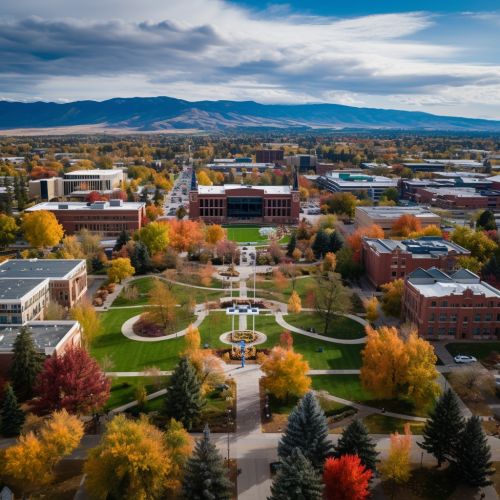Higher education in the United States
Overview
Higher education in the United States is an optional stage of formal learning following secondary education. It is delivered at institutions of higher education, which include community colleges, liberal arts colleges, universities, and others. Higher education includes both the undergraduate (i.e., bachelor's) and the graduate (or postgraduate) levels. Bachelor's degrees are typically awarded after four years of full-time study; master's degrees after two additional years, and doctorates after yet another three to five years.
History
The history of higher education in the United States begins with Harvard College and continues to the present time. For recent trends see the article on educational attainment.


Types of Institutions
There are two types of higher education institutions in the United States: public universities and private universities. Public universities are funded by the state government and are typically larger than private institutions. Private universities rely on endowments, tuition fees, and donations for funding.
Public Universities
Public universities are administered by the individual states and territories, usually as part of a state university system. Each state supports at least one state university and several support many more. Public universities generally offer a wide variety of programs and are traditionally larger than private institutions.
Private Universities
Private universities are not operated by governments but rather by private individuals, corporations, and organizations. They are generally smaller than public universities and often have a smaller student-to-teacher ratio. They can be either non-profit or for-profit institutions.
Admissions Process
The admissions process for higher education in the United States varies from institution to institution. Most institutions require students to submit standardized test scores, such as the SAT or ACT, as well as high school transcripts, letters of recommendation, and personal essays. Some institutions may also require interviews.
Academic Structure
The academic structure of higher education in the United States is typically composed of two levels: undergraduate and graduate. Undergraduate education usually leads to a bachelor's degree, while graduate education leads to master's and doctoral degrees.
Undergraduate Education
Undergraduate education in the United States is typically a four-year program, leading to a bachelor's degree. Students can choose from a variety of majors, and they are also required to take a range of general education courses in various subjects.
Graduate Education
Graduate education in the United States includes both master's degrees and doctoral degrees. Master's degrees typically require one to two years of study, while doctoral degrees typically require five to six years of study.
Cost and Financial Aid
The cost of higher education in the United States can be quite high, with tuition and fees often exceeding $30,000 per year at private institutions. However, many students receive financial aid in the form of scholarships, grants, and loans, which can significantly reduce the cost.
Accreditation
Accreditation in higher education is a process by which outside agencies evaluate colleges and universities to ensure they meet certain standards of quality and integrity. It is a voluntary process and is carried out by private, non-profit organizations that have been approved by the U.S. Department of Education.
Issues and Controversies
There are several issues and controversies associated with higher education in the United States, including the high cost of tuition, the value of a college degree in the job market, and issues of diversity and inclusion on campus.
